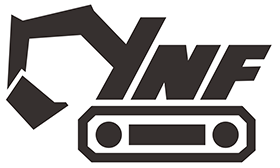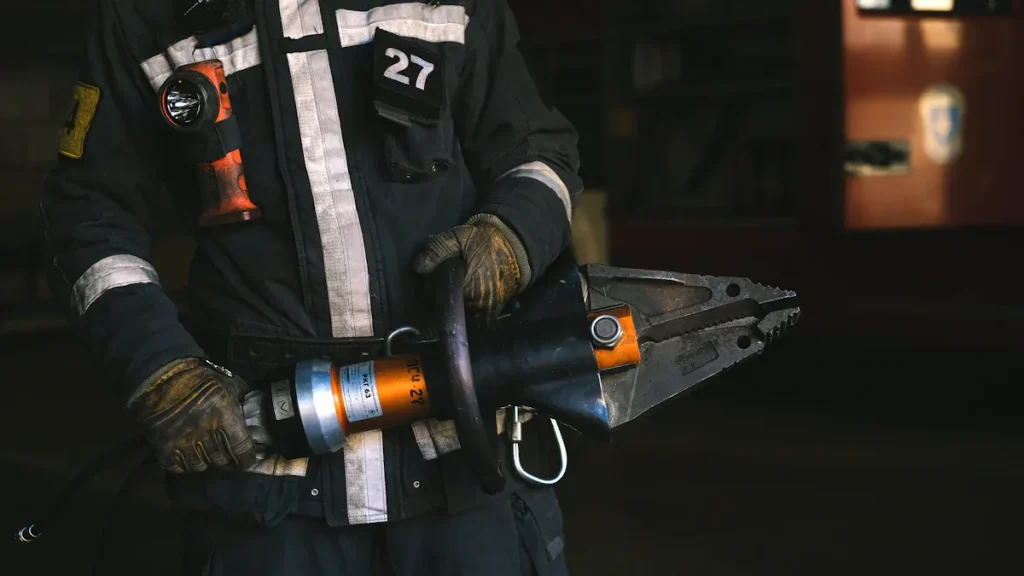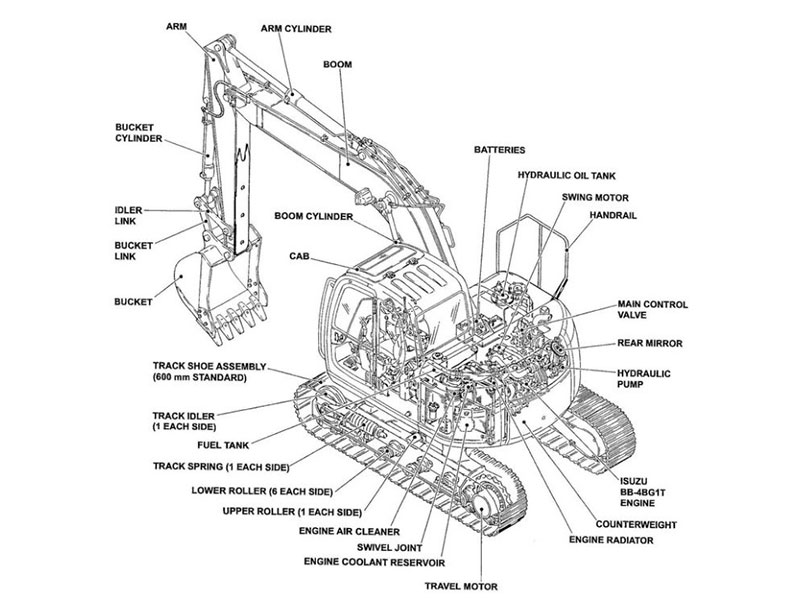Replacing your mini excavator hydraulic pump helps your machine work well. It also stops expensive repairs. If you take care of the pump on time, you keep your equipment safe. You also make it last longer.
Regular care makes your machine work better. It also stops it from breaking down.
If you do not take care of it, it can get too hot. This can make it wear out faster.
Bad seals and gaskets can make the pressure go down.
Oil that is dirty can hurt the pump inside.
If the pump breaks, it can damage other hydraulic parts.
Always think about what you can do before you start. Safety and good care are very important.
Key Takeaways
Taking care of your hydraulic pump often stops problems and helps your mini excavator last longer. – Look for early signs of pump failure, like slow movement or weird sounds, so you do not have to pay a lot for repairs. – Pick a replacement pump that fits by checking the model, serial number, and details to make sure it works right. – Always stay safe by letting out pressure, wearing safety gear, and keeping your work area clean when you change the pump. – Check fluid levels every day and look for leaks to keep your machine working well and to stop damage.
When to Replace a Mini Excavator Hydraulic Pump
Signs of Pump Failure
It is important to know when your mini excavator hydraulic pump is failing. Look for these signs that show pump failure:
The machine does not work as well as before.
It loses power slowly or all at once.
It moves slower than normal.
Movements can be jumpy or not smooth.
You hear strange noises.
There are grinding or screeching sounds.
If you hear weird noises from the excavator hydraulic pump, pay attention. Loud banging or knocking can mean air got into the hydraulic fluid. If the fluid gets hotter than 180°F, this is a problem. Too much heat can hurt seals and make the fluid break down faster. These things can cause pump failure and hurt the whole hydraulic system.
Tip: If your excavator moves slow, feels weak, or does not move, check the hydraulic pump right away.
Diagnostic Tips
Finding problems with your hydraulic pump helps you fix them early. You can use different tools and steps to check the pump.
Diagnostic Tool | Description |
|---|---|
Rapid oil quality analysis | Checks if the hydraulic oil is old or dirty, which can cause pump failure. |
Hydraulic system tester | Measures how much fluid the pump moves under load. Low flow means possible pump trouble. |
Noise meter | Monitors pump noise. If it goes above 105db, you may have misalignment or worn parts. |
Thermometer | Compares pump casing temperature to oil temperature. Big differences can mean mechanical problems. |
Pressure gauge | Watches for pressure changes. Strange readings can show pump or system issues. |
Here are steps to find pump problems:
Check the hydraulic oil level. Make sure it is correct.
Listen for strange sounds at the pump and engine.
Use a pressure gauge to look for changes and loud noises.
Test the pilot pump pressure with a gauge.
Check the pilot safety lock solenoid valve and change it if needed.
Look at all pipelines to see if they are blocked.
If you find any problems, plan to replace the pump soon. Fixing issues early helps your mini excavator work well.
Selecting a Replacement Hydraulic Pump
Compatibility Factors
You need to choose a hydraulic pump that matches your mini excavator. The right pump keeps your machine safe and working well. Always check the pump’s model and serial number. Make sure the pump fits your excavator’s brand and model. If you use a remanufactured pump, look for high quality. The correct pump prevents fitting problems and keeps your machine safe.
Here are important factors to check:
Make and model of your machine
Engine horsepower
Operating weight
Hydraulic flow and pressure needs
OEM part number
The hydraulic pump must deliver the right flow and pressure. This affects how well your mini excavator works. You should check the flow rate and pressure ratings. The pump must meet the system’s needs for fluid volume and pressure. If you pick the wrong pump, your excavator may not work right.
Tip: Always verify part numbers. Use your owner’s manual or manufacturer guidelines to confirm you have the correct pump.
Sourcing the Right Pump
You want a pump that is reliable and fits your machine. Before you buy, check the serial number. Cross-reference it with the manufacturer or dealer. This helps you avoid fake or poor-quality parts.
When you look for a pump, inspect the packaging. It should have clear labels and correct logos. Check the part number against your manual. Ask for warranty information and certifications like ISO or CE. Be careful if the price is much lower than normal. This can mean the part is not real. Read reviews to see if the supplier is trustworthy. Inspect the pump for damage or defects. Use tools to test the part before you install it.
Note: Ask the seller for complete machine documentation. Check proof of ownership and service history. Make sure the serial number matches the paperwork.
A good pump helps your mini excavator hydraulic pump work well and last longer. Take your time to choose the right one.
Preparation Steps
Tools and Materials
Get all your tools and materials before you start. The right equipment helps you stay safe and work fast. Here are the things you need:
Wrenches and socket sets come in many sizes. They help you loosen and tighten bolts and nuts.
Screwdrivers, both flathead and Phillips, help you take off covers and panels.
Pliers, like needle-nose and regular ones, help you hold and move small parts.
A torque wrench helps you tighten bolts to the right amount.
Sealant and gasket removal tools help you clean old stuff off and get surfaces ready for new seals.
Hydraulic fluid is needed to fill the system after you finish.
Cleaning supplies, like rags, brushes, and degreasers, help keep your area and parts clean.
Safety glasses keep your eyes safe from splashes and flying bits.
Gloves protect your hands from sharp things and hot parts.
Steel-toe boots keep your feet safe from heavy stuff.
Spill mats or absorbents catch drips and spills to keep the area safe.
A waste oil container holds old hydraulic fluid so you can throw it away the right way.
Tip: Put out all your tools and materials before you start. This saves time and helps you not forget anything.
Safety Precautions
Safety is very important when you work on hydraulic systems. You need to protect yourself and your machine.
Let out all pressure from the hydraulic system. Turn off the engine and move the controls to release trapped pressure.
Unplug the battery or power source. This stops the machine from starting by accident.
Clean the hydraulic oil tank. Take out dirt and junk so nothing gets inside.
Change the hydraulic oil and filter. New oil keeps the pump safe and helps the system work well.
Check bearing clearance and look at seal rings. Bad bearings or broken seals can make leaks and cause the pump to fail.
Always wear your safety gear and keep your workspace neat. A clean and safe area helps you stay away from injuries and big mistakes.
If you follow these steps, your mini excavator will be ready for a safe and easy hydraulic pump replacement.
How to Replace Hydraulic Pump
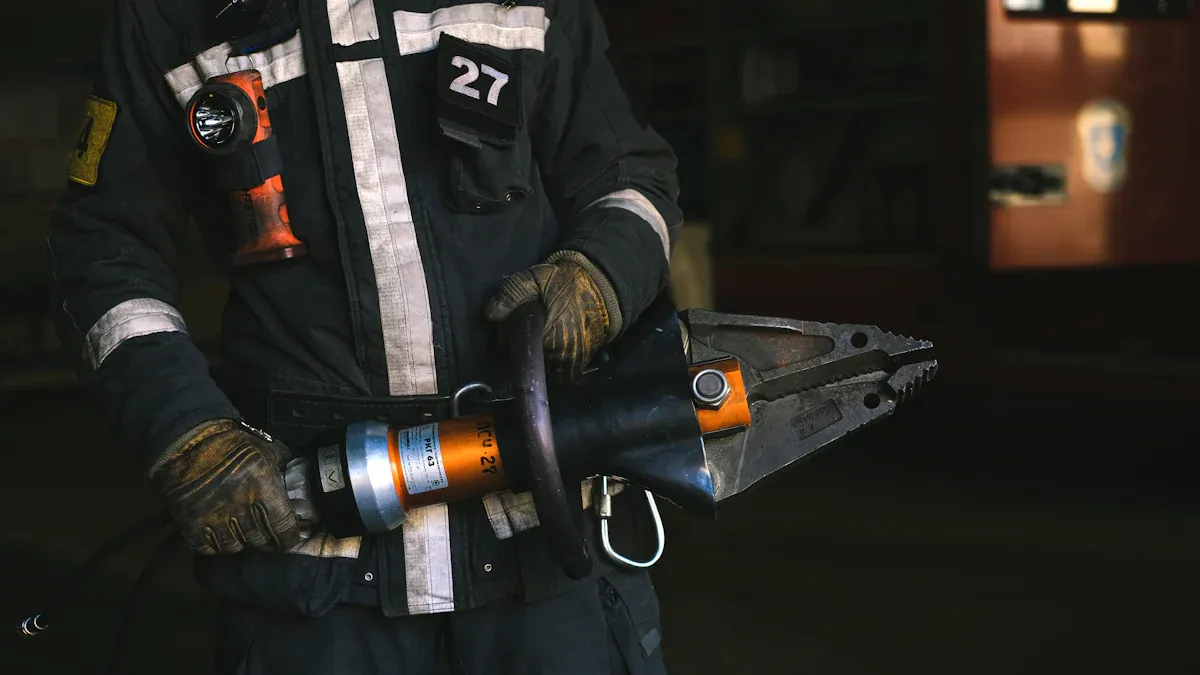
Replacing the excavator hydraulic pump takes careful steps. You need to work slowly and keep everything clean. Follow each step to protect your mini excavator hydraulic pump and make sure it works well.
Disconnecting Hydraulic Lines
Start by disconnecting the hydraulic lines. You need to prevent leaks and keep dirt out of the system.
Use an open-end wrench to hold the tube fitting steady.
Use a second wrench to unscrew the swivel nut on the center nut.
Make sure the tube nut does not turn while you loosen the swivel nut.
The lines will lose pressure if you follow these steps. Only open hydraulic parts when you must, and close them quickly. Wipe down the area before you remove any caps or filters. Always use clean tools for hydraulic work. Keep your mini excavator under cover to stop dust and water from getting inside.
Tip: Wipe all fittings before you connect or disconnect them. Use clean containers and funnels with filters when you add oil.
Removing the Old Pump
You need to remove the old excavator hydraulic pump with care. This keeps the system safe and stops contamination.
Release the pressure in the hydraulic oil tank.
Remove the cap screws and take off the shield.
Take out the suction filter assembly and install the suction plug.
Remove any protective devices or parts that block the pump.
Disconnect hoses and remove the suction pipe.
Remove connectors and take out the main pump.
Set the old pump on a clean surface. This keeps dirt and debris away from the system.
Note: Always clean the area before you start. Dirt can damage the new mini excavator hydraulic pump.
Installing the New Pump
Install the new pump by following the reverse order of removal. You need to align and secure the pump to the engine.
Use a straight edge or feeler gauges to check alignment. For more accuracy, use dial indicators or laser alignment tools.
Bolt the new hydraulic pump to the engine. Tighten bolts to the correct torque.
Check for end play on the crankshaft after you install the pump. This helps you avoid engine damage.
Connect all hydraulic lines. Make sure each fitting is tight and in the right place.
Tip: Securely bolt the new pump and double-check all connections before you move to the next step.
Connecting Hydraulic Lines
Connect the hydraulic lines to the new pump. You need to prevent leaks and keep the system clean.
Start with a clean surface so you can spot leaks.
Inspect all fittings for damage. Tighten each fitting to the correct torque.
Check seals for wear. Replace any bad seals before you connect the lines.
Look at the hydraulic lines for damage. Replace any damaged lines.
Alert: Never patch a damaged hydraulic line. Replace the whole section to keep your excavator hydraulic pump safe.
Bleeding the System
Bleeding the system removes air and keeps your mini excavator hydraulic pump working well.
Make sure your excavator is on level ground and turned off. Wear your safety gear.
Place the bucket or arm on the ground to keep the machine steady.
Find the bleed points on the hydraulic pump. Check your manual for help.
Gather your tools and a container for hydraulic fluid.
Loosen the bleed valve and let air escape. Watch for solid fluid to flow out.
Fill the hydraulic tank with fluid. Keep checking and adding fluid as needed.
Start the engine at idle for a few minutes. Bleed the pump again if needed.
Test the excavator for smooth movement.
If you do not bleed the system right, air can slow down the bucket and boom. Trapped air can lower lifting power and cause wear. Always keep oil in the sight gauge and watch for leaks.
Tip: Bleed the pump slowly and check fluid levels often. This keeps your excavator hydraulic pump running strong.
Testing and Troubleshooting Excavator Hydraulic Pump
Initial Startup Checks
After you install a new excavator hydraulic pump, you need to check that everything works as it should. Start by making sure the pump spins freely. If you feel resistance, stop and check for problems. Look at the couplings and mechanical seals to see if they fit well and do not leak. Take a small oil sample to check for dirt or metal pieces. Inspect all hoses, clamps, and connections for tightness and damage. Double-check that all valves and filters are in the right place and clean. Prime and vent the pump to remove any trapped air. Look at the base of the pump to make sure it sits flat and secure. When you start the engine, watch and listen for any strange sounds or leaks. These steps help you catch problems early and protect your mini excavator hydraulic pump.
Startup Checklist:
Check that pump spins freely.
Inspect couplings and seals.
Take an oil sample.
Check hoses, clamps, and connections.
Double-check valves and filters.
Prime and vent the pump.
Inspect the pump base.
Start up and do a final check.
Tip: Always keep a close eye on fluid levels and look for leaks during the first few minutes of operation.
Common Issues and Solutions
You may face some common issues after you replace your excavator hydraulic pump. Fluid leaks, slow response, or overheating can happen if something is wrong. If you notice slow movement or weak power, check the hydraulic fluid. Dirty or low fluid can cause these problems. Overheating can damage parts if the fluid gets too hot. Always inspect fluid levels, hoses, and seals. Change the hydraulic fluid and filters on time to prevent trouble.
If your excavator hydraulic pump does not work right after installation, follow these steps:
Check the hydraulic fluid level.
Inspect filters for clogs or dirt.
Look for leaks in hoses and fittings.
Check the pump for damage or wear.
Make sure the pump gets enough power from the engine.
Hydraulic system malfunctions often come from leaks, low power, or overheating.
Slow hydraulic response usually means dirty fluid or a worn-out pump.
Overheating can happen if fluid temperature goes above 81°C.
Alert: Fix leaks and replace damaged parts right away to avoid bigger problems.
By following these checks and solutions, you keep your excavator hydraulic pump running smoothly and avoid most common issues.
Excavator Hydraulic Pump Maintenance
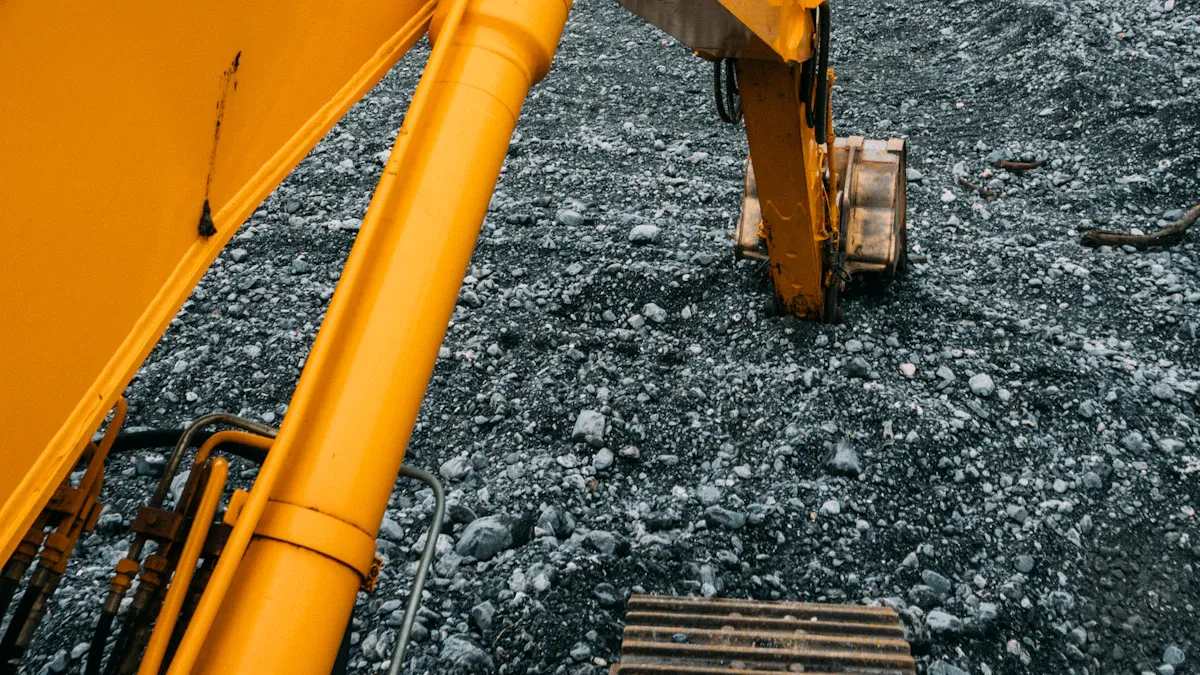
Regular Inspection Tips
Check your mini excavator hydraulic pump often. Start each day by walking around the machine. Look for any damage on the outside. Check the fluid levels for engine oil, coolant, and hydraulic oil. Look at hoses, lines, and the pump compartment for leaks. Try to spot leaks early. Watch for wet spots or puddles under the machine. These can mean there is a leak. Check seals and gaskets for wear. Make sure hoses and other parts look good and feel tight. Daily checks help you find problems before they get worse.
Walk around and look for damage.
Check oil, coolant, and hydraulic fluid levels.
Look at hoses and lines for leaks.
Watch for fluid loss signs.
Check seals, gaskets, and worn parts.
Make sure hoses and parts are in good shape.
Tip: Checking every day helps you avoid big repairs. It keeps your excavator working well.
Extending Pump Life
You can help your pump last longer with good care. Check the hydraulic fluid temperature every month. It should be less than 180°F when you use the machine. Look at the fluid color and how it looks. If it is dirty or has bits in it, change it. Test system pressure and how fast it responds to make sure it works right. Change hydraulic filters every 250 hours. Test the fluid for dirt every 500 hours. Change all hydraulic fluid every 1,000 hours. Clean the hydraulic tank and parts when you change fluid. Run a pressure test to make sure it works safely.
Maintenance Practice | Description |
|---|---|
Maintain Proper Hydraulic Fluid Levels | Keep fluid levels in the right range to stop system failure. |
Monitor for Leaks | Check for leaks near cylinders and motors to keep hydraulic power. |
Ensure Proper Maintenance of Hydraulic System | Do monthly checks on fluid temperature, color, and how it looks for best results. |
Watch for warning signs like slow or jumpy movements, weird noises, hot fluid, or dirty fluid. Fix these problems right away. Clean out deposits inside the valve body and oil circuit when you change fluid. Taking care of your pump helps it work better and last longer.
Note: Doing regular maintenance keeps your pump strong and your excavator safe.
You can change a mini excavator hydraulic pump by following easy steps. Always think about safety and keeping things clean. Follow what the manufacturer says. First, learn about your machine and the pump. Check the shaft type, ports, and mounting flange. Use the right tools for the job. Put on your safety gear before you start. After you install the pump, look at hoses, seals, and fluid levels every day. Keep your equipment in a dry spot. Do not put too much weight on it.
Maintenance Practice | Description |
|---|---|
Daily checks of hydraulic fluid levels | Makes sure the machine works and stops damage. |
Inspect hoses, seals, and couplings | Keeps pressure up and stops leaks. |
Store equipment in a dry area | Stops weather from hurting parts. |
Avoid overloading | Keeps hydraulic parts from getting worn out. |
If you do not feel sure or see a problem, ask an expert for help. Checking your machine often and using good habits helps it work well.
FAQ
How often should you check your mini excavator hydraulic pump?
You should check your hydraulic pump every day before you use your machine. Look for leaks, listen for strange noises, and check fluid levels. Regular checks help you find problems early.
What happens if you do not bleed the hydraulic system after pump replacement?
Air can stay in the system if you skip bleeding. This can cause slow or jumpy movements. Your pump may wear out faster. Always bleed the system to keep your excavator working well.
Can you use any hydraulic pump for your mini excavator?
No, you must use a pump that matches your machine’s model and specifications. The wrong pump can cause damage or poor performance. Always check your manual or ask a trusted supplier like YNF Machinery.
How do you know if your hydraulic fluid needs changing?
Check the fluid color and look for dirt or metal bits. If the fluid looks dark or dirty, change it. Clean fluid keeps your pump safe and helps your excavator last longer.
Where can you find quality replacement hydraulic pumps?
You can find quality replacement pumps at YNF Machinery. They offer reliable parts that fit many mini excavator models. Always check the part number and ask for warranty details before you buy.
